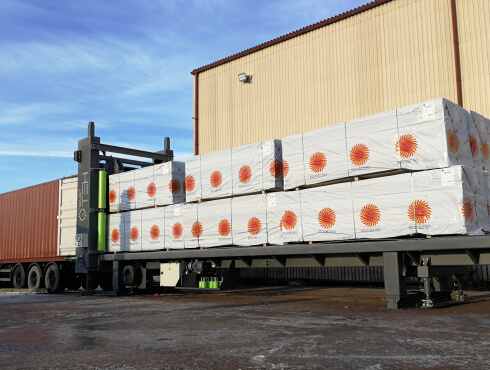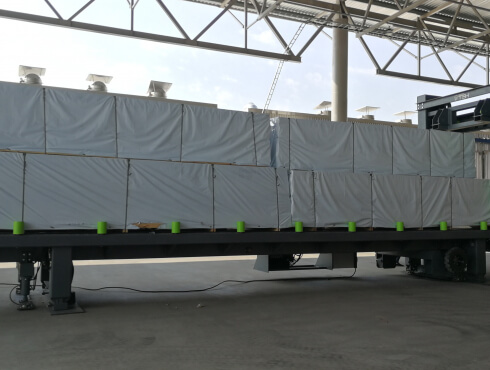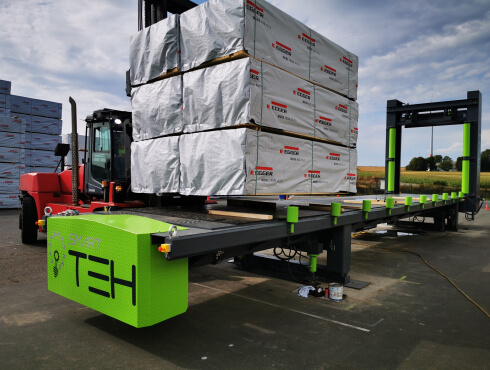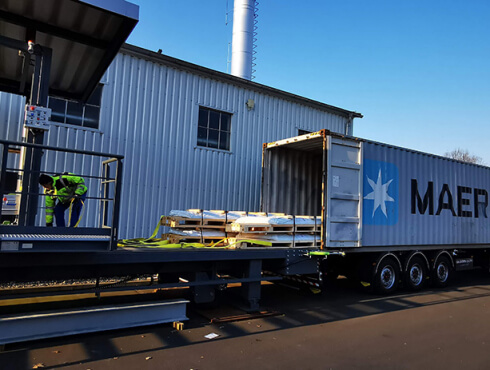
Unloading containers is a basic step in the sourcing process. Despite that, not having the right practices, tools or machinery, unloading becomes a nuisance for any company. Traditional practices at warehouses focus on streamlining the picking, the packing and the loading process. However, planning the unloading process will positively impact the following:
- downtime
- labor
- space availability
- service flexibility
- cost
The traditional container unloading method
The traditional method involves many workers operating at risk when opening a container, finding heavy and unsecured items. The systems used to unpack containers may include the manual handling of goods. This involves heavy lifting, causing potential injuries or health issues. Many companies solve this issue by introducing forklifts, which brings good results when moving low volume articles or palletized items. If this is the case, consider investing in a forklift.
When items are heavy and bulky, such as in the wood and steel industry, choosing forklifts is not the smartest solution. The following are common practices when using the traditional method:
- containers are placed on uneven ground
- lack of container unloading procedure
- there is a high risk of loose items falling when opening the doors of the container
- long handling time moving goods one by one, or pallet by pallet
- it’s necessary to select suitable straps or chains, not always available in the warehouse
- using forklifts not designed to tow to drag items out of the container
- many workers around the container
- manual tasks that need lifting heavy and bulky items
- increases the risk of slipping and falling
What does the SmartTEH container loading system do?
Our system consists of a moving plate, capable of sliding within the space of the containers. The plate collects all the merchandise inside the container and pulls it out, driven by an electric or hydraulic motor. The system contains a set of legs that ensures levelling the container position.
There are also clamps to ensure the fixation of the coupled structures. The system can be controlled either from a board or by remote control.
From opening container doors to removing and placing items to the dock location, the system contributes to a safe and effective container unloading process.
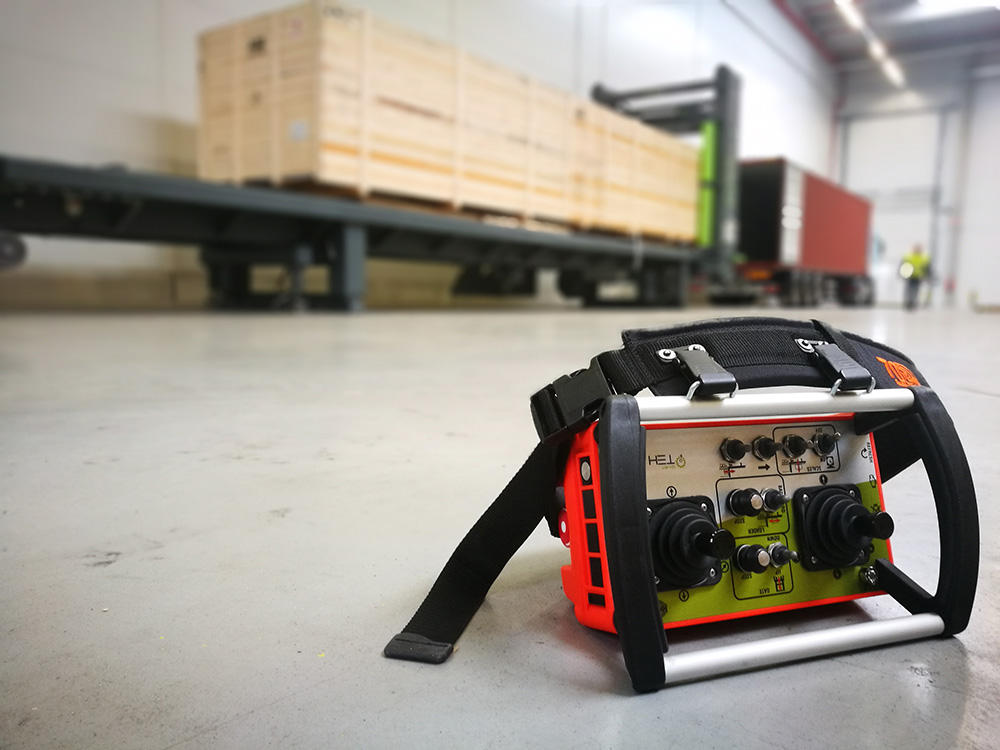
How using the SmartTEH container unloading system can improve the process?
SmartTEH contributes to improving warehousing practices by introducing specifically designed machinery. The machinery is able to resolve all the traditional issues mentioned above. The system enhances throughput time and labor productivity. It also introduces a smarter method for unloading shipping containers from the truck. Comparing this process with traditional truck unloading, there are immediate savings and higher returns on investment.
Companies can achieve many benefits, which are listed below:
1. Increases product safety
There is no more excess of handling and merchandise moves as one whole load. Bulky and heavy loads will be unloaded in just one exit. Goods slide out from the container through the sliding plate. There is no excess movement of goods. Finally, it reduces the possibility to damage to the inbound goods and avoids the need for later purchases.
2. Reduces the truck waiting time
The truck loading and unloading time will be reduced. Trucks and containers can be so costly if their waiting time is high. SmartTEH unloading system helps to increase truck usage and frees the trucks after a few minutes. The use of automated container systems allows for an increase in the number of shipments or receptions of trucks per time unit. It also increases the docking capability. Finally, it contributes to reducing the logistical cost and handling cost.
3. Reduces labor cost
Companies will see their labor productivity-increasing immediately. Additionally, the handling of man-hours and cost reduce significantly. There is no need for many workers; the operation requires just one worker rather than a full staff. Reduce unnecessary and tiring excesses of movement that the personell take to pull the merchandise out of the container. Labor also can be reallocated to another task in the factory. Unloading process time lowers from about half an hour to just a few minutes, in comparison with the traditional system.
4. Safer working conditions
Using automated unloading systems lowers the risk for workers. The workers don’t need to go inside the container or handle the merchandise. It’s only needed to pull out the plate with goods from the control board or remote control. To get a full guide for unloading safely goods from containers, check the guide for unpacking shipping containers from Safework NSW.
5. Increases the available space
Space in warehouses and terminals are a significant resource. Companies can reduce their costs and improve efficiency by maximizing space utilization. The total merchandise unloaded lay in just one place. Searching for a shipment is simplified because all goods are bulked in one load. There is no need for high manoeuvrability since it’s not necessary to move extra equipment inside the container.
6. Aids in an organized environment
An organized environment will directly impact the satisfaction of workers. Introducing suitable machinery promotes the creation of a safe and clean environment and enhances good manufacturing practices. No extra platform, ramps or tools are required. There is a hydraulic lifting platform that levels the system to the required height. The gate of the system ensures a smooth movement of the goods when moving outside.
7. Uses suitable machinery for unloading goods
You’ll have machinery specifically designed for safely unloading goods. Get rid of alternatives that risk the safety of equipment or facilities, personnel and products. The system doesn’t need a forklift or other inadequate equipment or crane. It’s the best solution when unloading bulky, heavy and long goods such as sections, pipes, poles, pipes, rails, steel racks, log.
It’s remarkable that unloading systems need low maintenance and minimum power consumption.
8. Increases operating profit
In summation, efficiency means lower total cost and vice versa. The total cost can be broken down into operational and logistical improvements, so enhancing the operating profit and return on investment. And finally, it ensures the competitiveness and sustainable growth of your business.
